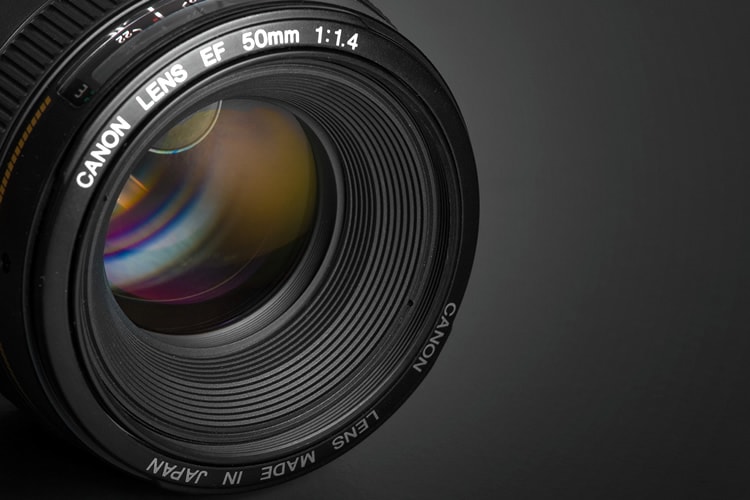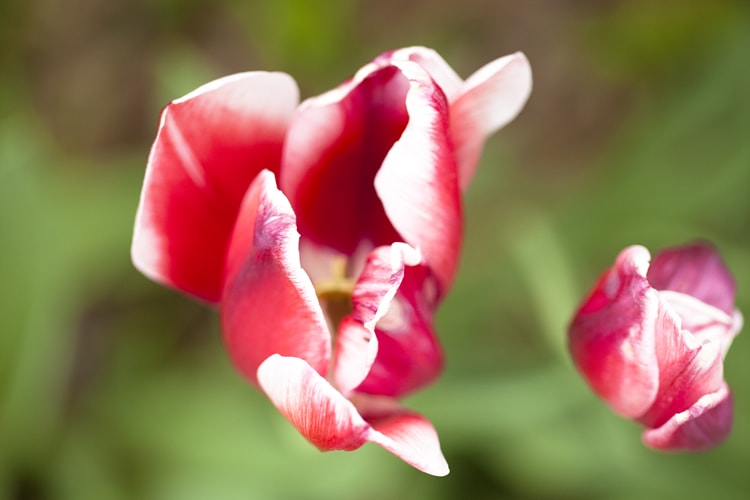4 Reasons Every Photographer Should Own a Prime Lens
In my years as a photographer, one of the best things I’ve discovered is how awesome prime lenses are. Now, prime lenses aren’t nearly as popular as their zoom counterparts. People new to photography rarely think about getting a prime lens; and if they do, it’s almost always a 50mm to compliment their zooms. But there are lots of other fantastic prime lenses that you should know about.
As I’ve used more and more prime lenses and slowly added them to my bag, I’ve noticed that they have mostly replaced zoom lenses for me. In fact, I almost exclusively shoot with prime lenses now.

photo by Andreas Levers
You’re probably thinking, what’s so great about primes? Aren’t they just like zoom lenses, except you lose the luxury of zooming? Sure, they might have a few advantages, but doesn’t the convenience of zooms outweigh those small advantages?
Actually, primes have quite a few advantages over zooms, and they’re pretty significant. In my experience, I’ve found these benefits to outweigh those of zooms. You may find the same is true for you. So here are some of my favorite things about prime lenses.
Image quality
You’ve probably heard that prime lenses have great image quality. This is because it’s cheaper and easier to make great glass if it doesn’t have to move to zoom. This means that you can buy a prime lens with very good glass – which translates into good image quality – and it will cost much less than a comparable zoom.
Even the cheaper prime lenses usually have great image quality. A good example of this is the 50mm f/1.8. Most manufacturers make a version of this lens, and most of them are known for their great value because of low price and good image quality.
If you research and look around, you can find some hidden gems among prime lenses. There are quite a few inexpensive primes with image quality that rivals lenses costing 3x as much. This is especially true when you stop the lens down to a small aperture like f/8 – sometimes it’s hard to tell the difference between a cheap prime and an expensive one.
Fast Aperture
I just finished saying how good prime lenses can be when stopped down to a small aperture. But another advantage of primes is that most of them have very large apertures for when you want them. A lot of 50mm primes are f/1.8 or f/1.4. Many inexpensive 35mm prime lenses are f/2. You can buy an 85mm f/1.8 for not much money as well.
Primes are often amazing at f/8 and the like, but they also usually perform very well wide open. I use my 85mm f/1.8 at f/1.8 or f/2 most of the time. Its image quality is absolutely fine. And the bokeh you can get at these apertures is wonderful. Prime lenses are the easiest way to get that shallow depth of field look.

Canon 5D Mark II | 100mm f/2.8L IS Macro | 1/125th, f/2.8, ISO 200
And of course, if you have the money, you can go for the high-end primes – the 35mm f/1.4s and 85mm f/1.2‘s of the world. These lenses are in a class of their own, and the images they give are unlike anything else. Just look at some sample images from a 35mm f/1.4. It’s a lot of money, but it’s way ahead of everything else.
Anyway, the inexpensive fast primes are often your ticket to sweet bokeh for cheap. From 28mm f/1.8’s to 100mm f/2’s, there’s a fast prime for every focal length, and usually one that’ll fit your budget. One of my favorite primes that I use all the time is the Canon 40mm f/2.8 pancake. It costs under $200. F/2.8 isn’t the fastest aperture, but it certainly gets the job done – and the image quality is close to that of my other lenses which cost 5x as much.
Size & Weight
When making a zoom lens, manufacturers must account for moving glass inside. This means a bigger lens body, to allow the glass to move. This makes the lens larger and heavier. It also means extra mechanics to actually move the glass when you turn the zoom ring – again, making for a bigger and heavier lens. With prime lenses, none of this is necessary. There are no zoom mechanics.
So it makes sense that across the board, prime lenses are smaller and lighter than their zoom counterparts. This is good news for anyone considering getting a prime lens. There are many advantages to a smaller and lighter lens:
- It takes up less space in your camera bag.
- It doesn’t add large amounts of weight to your bag like a big zoom lens would.
- It’s easy to carry around on your camera all day without getting a sore neck.
- It’s unobtrusive and doesn’t get in the way.
- It’s low-key and doesn’t draw attention like bigger lenses do (important for street photography).
I find that slapping my 40mm pancake on my 5D Mark III gives me a versatile setup with a very useful focal length – all while being small and light enough for me to carry it around comfortably. A cheaper combination that I used in the past was a 24mm f/2.8 (the old one) on a Canon Rebel – again, a small and light package that gave me lots of quality photos.
Growing as a Photographer
Here’s the deal: zoom lenses can make you lazy. Now, before you start hating on me, let me say this: zoom lenses are a very important part of photography, and they allow us to capture images we wouldn’t be able to capture with primes. Especially for professionals, they offer versatility necessary to get the required shots. When I shoot events for hire, I always use zooms.
But there is a downside to always using zooms. See, zooms are great for successfully documenting. But primes are great for improving your art.
Here’s what I mean: what happens when you’re shooting with a zoom and you want a tighter angle? You zoom in. Easy. But what if you’re shooting with a prime and you want a tighter angle? You have to completely rethink the shot. Sometimes it’s as simple as stepping closer – in which case, you’ll have to deal with a different perspective than where you were standing before. You’ll end up with a totally different shot, because the angle of view will be different.
But if you can’t just step closer, if there’s something in your way, then you’re forced to completely overhaul the shot. You have to look at the subject differently and see what else you can come up with. And when this happens, you often see a completely different shot – one that you wouldn’t have noticed unless you had to look for it.
So, as you can see, primes can develop your artistic sense as a photographer if you use them for that purpose. Of course, I don’t recommend this if you’re shooting something like a paid event, where getting the shot is more important than developing your photographic eye. For that kind of shooting, you should use whatever you’re comfortable with. But for casual shooting, try a prime lens – it’ll give you a new perspective.
See, prime lenses make you think. It’s not as easy as zooming in. And, a lot of times, it’s hard. But forcing yourself to think and work to get a good shot, will make you a better artist faster than anything else.
Summary
In this post, I’ve shown you four reasons you should add a prime lens to your camera bag. Now make no mistake: shooting with a zoom lens is often necessary. If you’re shooting an event where it’s crucial that you get certain shots at many different focal lengths, a zoom lens is a must. I definitely recommend you have at least one or two zooms in your kit.
On the other hand, there are certain situations where primes are advantageous. For example, in an extremely low-light environment, an f/1.4 prime will give you the best results because of its large f/1.4 aperture. If you’re walking around all day, you might find it more comfortable to carry a small prime, like a 35mm f/2, rather than a bigger zoom lens. If you’re looking for maximum image quality on a budget, prime lenses provide a great value in image quality for a low price. And of course, they are great for helping you develop your eye as a photographer.
So that’s why I think you should try shooting with a prime lens. By now you can see how zoom lenses and prime lenses are each useful in different situations. So if you’ve never owned a prime lens, I encourage you to get one and try it out. You may find that, instead of limiting you, it actually gives you more creative freedom.
